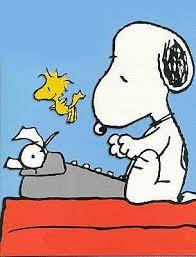Rejection Letters--An Editor's Point of View
Mar 21,2016
Last month I shared some ideas for those of us who are looking to become published either before or during our university studies. One of the major pitfalls of trying to get published is the rejection letter. If you want to be a writer, you'll need to get used to the idea of rejection letters. Rejection letters are simply a part of trying to be published. As both a writer and an editor, I've seen both sides of the issue.
Contrary to popular belief, editors don’t find a sadistic satisfaction from sending out rejection letters. There is that one editor with a voodoo doll and a case of push pins, but that’s another story. Most editors are writers too, and we know how there’s nothing like the prick of a rejection letter to pop the air from a writer’s bubble.
As a writer myself, there were times when I received too many rejections in a row and I couldn’t help but take them personally. Was it my storytelling? My habit of submitting acrostic poetry? Was my Aunt Ellie just wrong and I really don’t have a way with words? But then I became an editor, and I realized that decisions aren’t always about storytelling or talent.
The Secret is No Great Secret
Here’s the big secret that’s really no secret at all: most decisions are based on personal preference. There’s no complex system editors use to determine quality (think of the formula in the textbook meant to determine a poem’s value in Dead Poet’s Society). There’s no predetermined list of writers to accept or reject. It’s not about what MFA program you went to, or if you even have an MFA. Not everyone’s style is to everyone’s taste. That’s it.
I have great respect for Hemingway-esque simplicity, but it’s not the kind of work I’m drawn to publish. I love work that plays with, stretches, challenges the English language. I believe we’re blessed to read and write in the English language. Truly.
One Thing is Too Much Like the Other
I edit a journal of historical fiction, and there are times when we get a lot of submissions set in the same era—World War II and the Old West are two of the most popular. But because we receive so many stories set during the same time, we can’t publish them all. I know the consensus is that writers should read literary journals to see if they’ve published work similar to the work you want to submit. Generally, that’s true, and I’ve shared that tip myself. But let some time pass if you want to submit a story on exactly the same subject as one that has just been published. If you see a story in our journal about the American Civil War in our Spring edition, wait until Autumn before you send in your Gettysburg tale.
Which brings us to the million dollar question: how can you know exactly when to submit your work? Unfortunately, you can’t. There’s an element of luck involved in sending your work to the right publisher at the right time. But don’t let rejections stop you from submitting to other journals. The more research you do, and the more you submit, the more opportunities you have to turn the tides of timing in your favor.
I know the form letter rejections aren’t very helpful for writers, but they’re a necessary evil due to the number of submissions most journals receive. Just remember, the next time you receive one, it’s not about your talent. It’s about the editors, their personal tastes for the type of writing they prefer, and the type of stories they’re looking to publish at the time.





